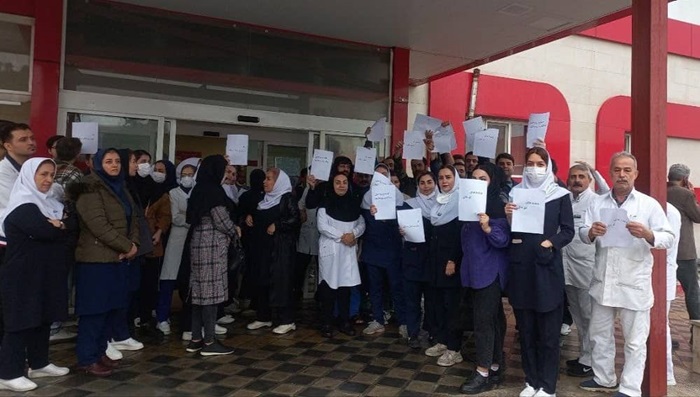
In recent developments across Iran, nurses have taken a firm stand against mandatory overtime, launching protests in several cities to voice their grievances.
Healthcare professionals are pushing back against what they describe as “exploitation” due to excessive shifts and insufficient compensation. A significant episode in this ongoing struggle occurred in Mashhad, where nurses have formally lodged a complaint with the Court of Justice regarding compulsory overtime work. Furthermore, approximately 200 nurses at Shahid Rajaee Hospital in Shiraz have publicly demonstrated against the harsh working conditions they face, emphasizing the need for reform in the overtime system.
The dissatisfaction stems from the paltry sum paid for overtime—reported by ILNA news agency to be between 16,000 to 20,000 tomans per hour, equivalent to a mere 31 cents at current exchange rates. This remuneration is viewed by the nursing community as inadequate given the demanding nature of their work.
The issue of nurse understaffing and exploitation is further complicated by the broader context of Iran’s healthcare system. Mohammad-Ali Mohseni Bandpey, a member of the Health and Treatment Commission of the regime’s parliament, acknowledged the impending crisis due to the potential mass exodus of medical staff. He criticized the delayed and insufficient implementation of nursing service tariffs meant to improve nurses’ job satisfaction.
April 13—Ahvaz, southwest #Iran
Nurses of Golestan hospital rally in front of the offices of the health ministry, protesting forced overtime work, unpaid wages, and changes to tariff laws.#IranProtests pic.twitter.com/hRcsd6HpZ3— People's Mojahedin Organization of Iran (PMOI/MEK) (@Mojahedineng) April 13, 2024
Bandpey highlighted the acute pressures on healthcare facilities in the western region of Mazandaran, where tourist influxes to cities like Nowshahr, Chalus, and Kelardasht exacerbate the workload on nurses. He described the situation as dire, with delayed payments, low staff numbers, and overwhelming patient volumes leading to widespread dissatisfaction among nurses.
These systemic issues are underscored by the financial struggles faced by hospitals, which suffer from low government tariffs and delayed payments by insurance organizations. This has led to an accumulation of debts at institutions like Mazandaran University of Medical Sciences and compounded the challenges nurses face.
The broader ramifications of these issues are seen in the migration trends among Iranian nurses. Abolghasem Abutalebi, from the Supreme Nursing Council, pointed out that the emigration of nurses had reached a “crisis point” by the end of the previous year. Despite training about 10,000 nursing staff annually, nearly three thousand chose to leave the country in 2022 alone, seeking better opportunities abroad, from neighboring Persian Gulf countries to Western and South African nations.
April 8—Lamerd, southern #Iran
Nurses hold rally, protesting forced overtime work, unpaid wages, and changes to tariff laws. #IranProtestspic.twitter.com/dqRBNvCkEr— People's Mojahedin Organization of Iran (PMOI/MEK) (@Mojahedineng) April 8, 2024
Abutalebi also criticized the slow pace of hiring, which is far from reaching the recommended standard of 2.5 nurses per bed. Currently, with only 240,000 nurses, Iran would need to triple this number to meet international healthcare standards. As protests continue, these nurses not only challenge the immediate conditions of their labor but also call attention to deeper systemic failures within the Iranian healthcare system. Their actions highlight a critical need for reforms to address both their working conditions and the broader health service issues in Iran.

MEK Iran (follow us on Twitter and Facebook), Maryam Rajavi’s on her site, Twitter & Facebook, NCRI (Twitter & Facebook), and People’s Mojahedin Organization of Iran – MEK IRAN – YouTu
